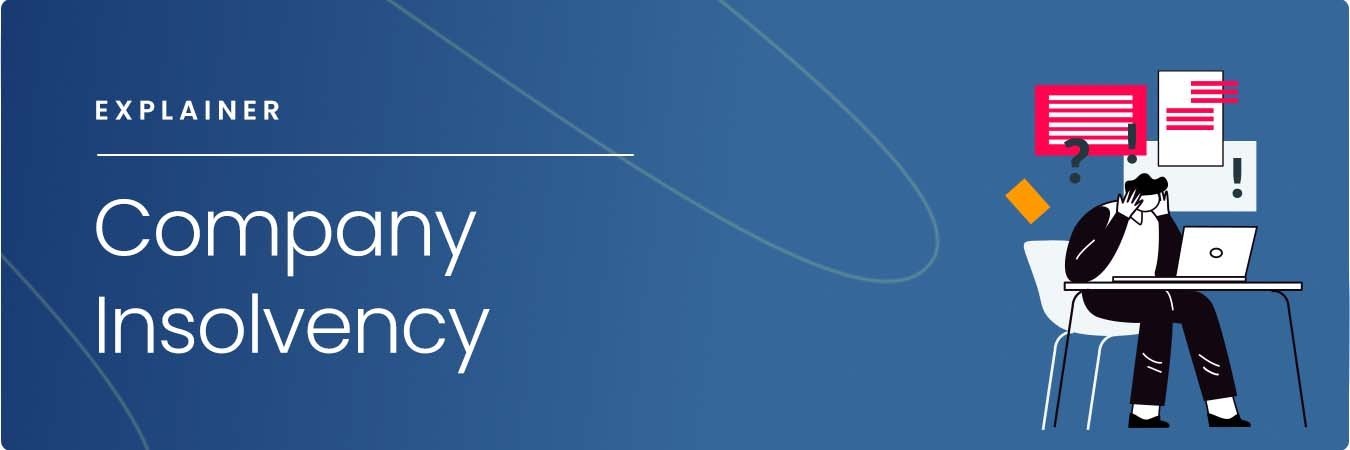7 Easy Facts About Insolvency Practitioner Explained
7 Easy Facts About Insolvency Practitioner Explained
Blog Article
Insolvency Practitioner Can Be Fun For Everyone
Table of ContentsExcitement About Insolvency PractitionerThe 30-Second Trick For Insolvency PractitionerThe Single Strategy To Use For Insolvency PractitionerInsolvency Practitioner Fundamentals ExplainedSome Known Incorrect Statements About Insolvency Practitioner Facts About Insolvency Practitioner UncoveredWhat Does Insolvency Practitioner Mean?
Insurance policy is kept track of and regulated by state insurance policy divisions, and among their primary goals is securing insurance holders from the danger of a firm in financial distress. When a company goes into a period of financial trouble and is not able to meet its commitments, the insurance commissioner in the business's home state starts a processdictated by the legislations of the statewhereby efforts are made to aid the company reclaim its financial ground.If it is established that the business can not be refurbished, the company is stated bankrupt, and the commissioner will certainly ask the state court to purchase the liquidation of the business. The insurance coverage commissioner, either assigned by the governor or chosen, heads the state insurance policy division and monitors and manages insurance task within the state.
[Back] By acquiring control of a company, the commissioner (or the insurance coverage department) is, by legislation, the rehabilitator or liquidator of the firm. In this capacity, the commissioner or division takes control of the company's procedures. As opposed to do so directly, the commissioner may keep an unique deputy receiver to manage the company's activities - Insolvency Practitioner.
Insolvency Practitioner Fundamentals Explained
The receiver oversees a bookkeeping of the company's assets and obligations and administers the estate of the firm. In doing so, the receiver looks for to make best use of the business's possessions, transfer them to cash, and afterwards distribute that cash to financial institutions having legitimate cases versus the insurance company in accordance with repayment top priorities defined by state law (in all states, insurance policy holders are priority plaintiffs whose claims are paid before those of general creditors).
All insurance provider (with limited exceptions) accredited to sell life or medical insurance or annuities in a state must be members of that state's guaranty association. The warranty association accepts the commissioner and the receiver in pre-liquidation planning. As soon as the liquidation is bought, the warranty organization offers insurance coverage to the firm's insurance policy holders who are state citizens (approximately the levels defined by state lawssee below; any type of advantage quantities above the warranty asociation benefit degrees come to be insurance claims against the business's continuing to be assets).
Little Known Facts About Insolvency Practitioner.
The above coverage degrees use independently for every bankrupt insurance firm. [Back] When an insurance firm falls short and there is a deficiency of funds needed to fulfill the obligations to policyholders, state warranty associations are triggered. Guaranty associations have two main sources of funding when offering insurance coverage to insurance holders. Guaranty associations have subrogation rights to a proportionate share of the assets continuing to be in the failed insurer.
Second, insurance firms doing company in that state are examined a share of the amount required to satisfy the section of the guaranty organizations' protected insurance claims not otherwise funded with estate properties. The amount insurers are examined is based on the quantity of premiums that they gather in that state. The National Company of Life and Health Insurance Coverage Warranty Organizations (NOLHGA) is made up of the life and health and wellness insurance policy warranty associations of all 50 states and the District of Columbia.
NOLHGA develops a job force of depictive warranty organizations to work with the insurance policy commissioner to create a strategy to protect policyholders. To learn more on NOLHGA's duty while doing so, see "What Is NOLHGA?" and "The Safety Web at the workplace." [Back]
Fascination About Insolvency Practitioner

Predictive security by aiding you choose the ideal consumers and the appropriate markets to avoid bad financial obligation in the first location, many thanks to acute monetary evaluation. In-depth market knowledge, giving you with 360-degree visibility on business fields and putting at risk troubles. It would certainly be a simplification to think a trade credit rating insurance begins and ends with premiums and pay-outs.

7 Easy Facts About Insolvency Practitioner Explained
Why does a business get in into insolvency? There are a number of factors why a firm might enter into insolvency.
Various other reasons for insolvency consist of scams, mismanagement, and unanticipated costs. When a firm ends up being financially troubled, its assets are made use of to settle its financial debts. This can have a significant influence on business, as it might no more have the ability to continue running. Bankruptcy can also result in task losses and the closure of businesses.
Some Ideas on Insolvency Practitioner You Should Know
The business may be forced to market assets, lay off staff or even close down. Financial institutions may be left out of pocket and the click here for more business's shareholders may see their financial investment go away.
This can take place for a number of factors, consisting of inadequate financial management, unexpected costs, or a change on the market. If a company is insolvent, it may be compelled to shut down or liquidate possessions to pay financial institutions. This can have a significant effect on the business, staff members, and investors.
It can result in task losses, possession sales, and even insolvency. It is necessary to recognize just how company insolvency works and just how it can affect your service. Why does a firm become part of insolvency? There are a variety of reasons a company may enter right into insolvency. One of the most common reason is that the firm is incapable to pay its debts as they fall due.
Some Known Questions About Insolvency Practitioner.
Various other factors for bankruptcy consist of scams, mismanagement, and unanticipated prices. When a company becomes top article bankrupt, its assets are made use of to pay off its financial debts - Insolvency Practitioner. This can have a major effect on business, as it might no more have the ability to continue operating. Bankruptcy can also result in work losses and the closure of organizations.
This can have severe implications for the firm, its stakeholders, creditors and the economic climate. The company may be required to market assets, gave up team or also shut down. This can have a ripple effect on the neighborhood neighborhood and the economic situation as a whole. Lenders might be omitted of pocket and the company's investors might see their financial investment go away.
Report this page